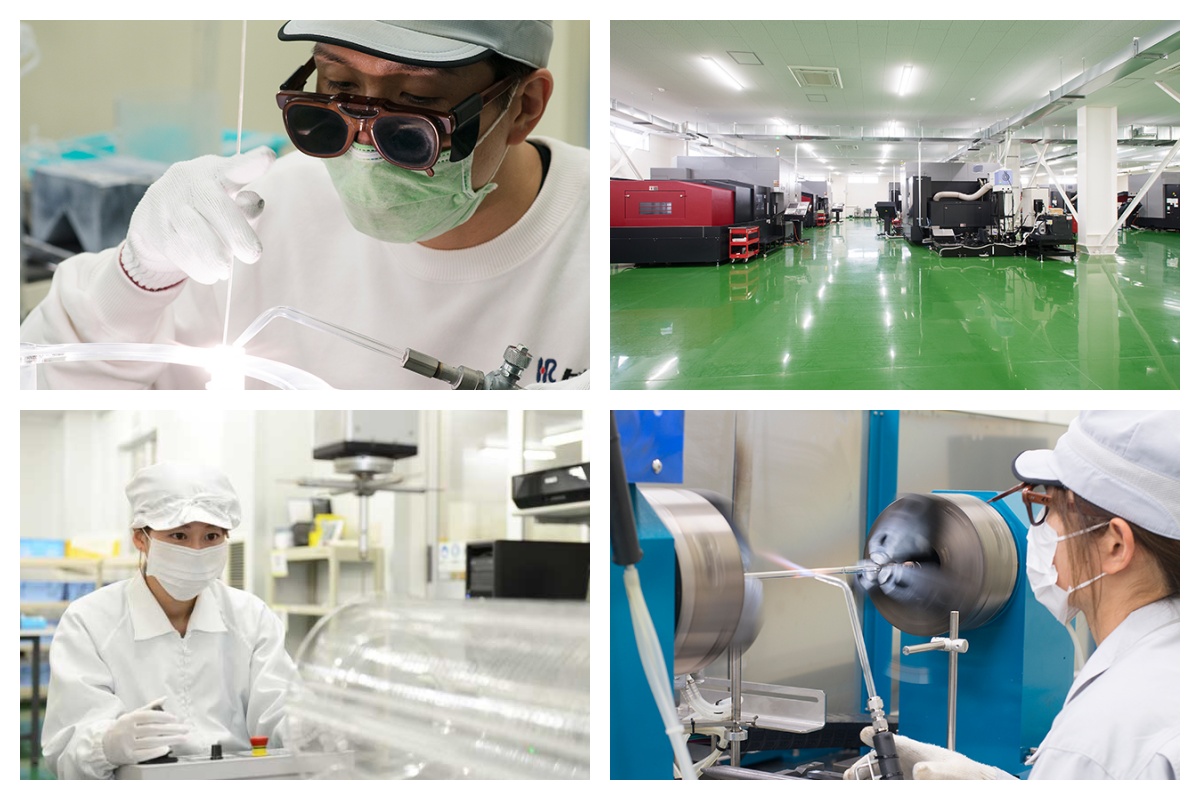SiC Ceramic Fork Arm / End Effector – Advanced Precision Handling for Semiconductor Manufacturing
Detailed Diagram


Product Overview
The SiC Ceramic Fork Arm, often referred to as a Ceramic End Effector, is a high-performance precision handling component specifically developed for wafer transport, alignment, and positioning in high-tech industries, particularly within semiconductor and photovoltaic production. Fabricated using high-purity silicon carbide ceramics, this component combines exceptional mechanical strength, ultra-low thermal expansion, and superior resistance to thermal shock and corrosion.
Unlike traditional end effectors made from aluminum, stainless steel, or even quartz, SiC ceramic end effectors offer unmatched performance in vacuum chambers, cleanrooms, and harsh processing environments, making them a key part of next-generation wafer handling robots. With increasing demand for contamination-free production and tighter tolerances in chipmaking, the use of ceramic end effectors is rapidly becoming the industry standard.
Manufacturing Principle
The fabrication of SiC Ceramic End Effectors involves a series of high-precision, high-purity processes that ensure both performance and durability. Two main processes are typically used:
Reaction-Bonded Silicon Carbide (RB-SiC)
In this process, a preform made from silicon carbide powder and binder is infiltrated with molten silicon at high temperatures (~1500°C), which reacts with residual carbon to form a dense, rigid SiC-Si composite. This method offers excellent dimensional control and is cost-effective for large-scale production.
Pressureless Sintered Silicon Carbide (SSiC)
SSiC is made by sintering ultra-fine, high-purity SiC powder at extremely high temperatures (>2000°C) without using additives or a binding phase. This results in a product with nearly 100% density and the highest mechanical and thermal properties available among SiC materials. It is ideal for ultra-critical wafer handling applications.
Post-Processing
-
Precision CNC Machining: Achieves high flatness and parallelism.
-
Surface Finishing: Diamond polishing reduces surface roughness to <0.02 µm.
-
Inspection: Optical interferometry, CMM, and non-destructive testing are employed to verify each piece.
These steps guarantee that the SiC end effector delivers consistent wafer placement accuracy, excellent planarity, and minimal particle generation.
Key Features and Benefits
| Feature | Description |
|---|---|
| Ultra-High Hardness | Vickers hardness > 2500 HV, resisting wear and chipping. |
| Low Thermal Expansion | CTE ~4.5×10⁻⁶/K, enabling dimensional stability in thermal cycling. |
| Chemical Inertness | Resistant to HF, HCl, plasma gases, and other corrosive agents. |
| Excellent Thermal Shock Resistance | Suitable for rapid heating/cooling in vacuum and furnace systems. |
| High Rigidity and Strength | Supports long cantilevered fork arms without deflection. |
| Low Outgassing | Ideal for ultra-high vacuum (UHV) environments. |
| ISO Class 1 Cleanroom Ready | Particle-free operation ensures wafer integrity. |
Applications
The SiC Ceramic Fork Arm / End Effector is widely used in industries that require extreme precision, cleanliness, and chemical resistance. Key application scenarios include:
Semiconductor Manufacturing
-
Wafer loading/unloading in deposition (CVD, PVD), etching (RIE, DRIE), and cleaning systems.
-
Robotic wafer transport between FOUPs, cassettes, and process tools.
-
High-temperature handling during thermal processing or annealing.
Photovoltaic Cell Production
-
Delicate transport of fragile silicon wafers or solar substrates in automated lines.
Flat Panel Display (FPD) Industry
-
Moving large glass panels or substrates in OLED/LCD production environments.
Compound Semiconductor / MEMS
-
Used in GaN, SiC, and MEMS fabrication lines where contamination control and positioning accuracy are crucial.
Its end effector role is especially critical in ensuring defect-free, stable handling during sensitive operations.
Customization Capabilities
We offer extensive customization to meet varying equipment and process requirements:
-
Fork Design: Two-prong, multi-finger, or split-level layouts.
-
Wafer Size Compatibility: From 2” to 12” wafers.
-
Mounting Interfaces: Compatible with OEM robotic arms.
-
Thickness & Surface Tolerances: Micron-level flatness and edge rounding available.
-
Anti-Slip Features: Optional surface textures or coatings for secure wafer grip.
Each ceramic end effector is co-designed with clients to ensure precise fitment with minimal tooling changes.
Frequently Asked Questions (FAQ)
Q1: How is SiC better than quartz for an end effector application?
A1: While quartz is commonly used for its purity, it lacks mechanical toughness and is prone to breakage under load or temperature shock. SiC offers superior strength, wear resistance, and thermal stability, significantly reducing the risk of downtime and wafer damage.
Q2: Is this ceramic fork arm compatible with all robotic wafer handlers?
A2: Yes, our ceramic end effectors are compatible with most major wafer handling systems and can be adapted to your specific robotic models with precise engineering drawings.
Q3: Can it handle 300 mm wafers without warping?
A3: Absolutely. The high rigidity of SiC allows even thin, long fork arms to hold 300 mm wafers securely without sagging or deflection during motion.
Q4: What is the typical service life of a SiC ceramic end effector?
A4: With proper use, a SiC end effector can last 5 to 10 times longer than traditional quartz or aluminum models, thanks to its excellent resistance to thermal and mechanical stress.
Q5: Do you offer replacements or rapid prototyping services?
A5: Yes, we support rapid sample production and offer replacement services based on CAD drawings or reverse-engineered parts from existing equipment.
About Us
XKH specializes in high-tech development, production, and sales of special optical glass and new crystal materials. Our products serve optical electronics, consumer electronics, and the military. We offer Sapphire optical components, mobile phone lens covers, Ceramics, LT, Silicon Carbide SIC, Quartz, and semiconductor crystal wafers. With skilled expertise and cutting-edge equipment, we excel in non-standard product processing, aiming to be a leading optoelectronic materials high-tech enterprise.















